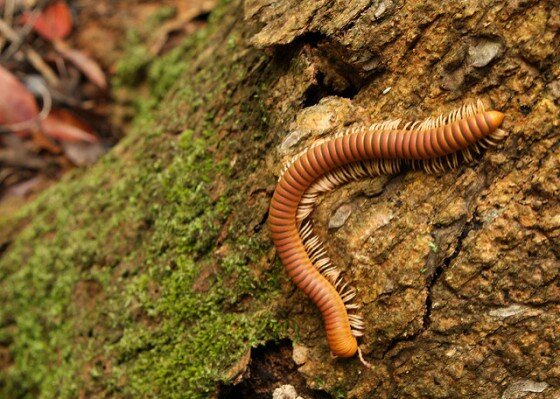Photo courtesy of David Dennis (Flickr)
Sometimes in nature, the things that seem entirely unremarkable can turn out to be hotspots of biotic activity. Such is the case for decomposing logs, which appear to be nothing more than parts of old trees slowly breaking down and returning to the soil from which they once grew. Hidden within and underneath these logs, however, are creatures we do not often see unless we seek them out.
Decomposing logs have much to offer for organisms that prefer to remain hidden. They provide a dark and damp environment perfect for secretive animals and those that need moisture to help their skin take in oxygen. Logs are a source of food for decomposers such as earthworms and millipedes, who break down organic matter and recycle nutrients. The decomposers ensure that our forests are not filled to the brim with old logs; instead, they recycle the nutrients from those logs and help them return to the forest. Depending on the tree species, it can take well over one hundred years for a tree to completely decompose. That process is helped along by some of these rarely seen creatures.
If you would like to explore the world of decomposers and other secretive organisms, look no further than the old logs in your yard or at the Nature Center. You are sure to find something squirming, crawling, or hiding in the wood and soil. Use the Rye Nature Center’s scavenger hunt for some ideas of what to look out for and be sure to check out the video below to see what Siobhan found on her log investigation!
Please explore the homes of these creatures safely and respectfully. Try not to travel off-trail, be mindful of poison ivy, and watch out for animals that might bite or sting. Handle insects and animals gently or just observe. Try to return them to the spot from which they were taken and be sure to roll the log over again when you are done so the animals who live under it can remain hidden. Enjoy!

